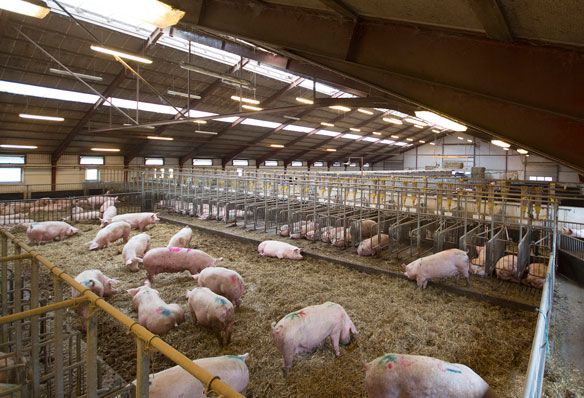Group-housing systems for sows after weaning and in early pregnancy

Subject
group-housing systems sows, after weaning, early pregnancy, risks
Target audience
Competent Authorities, inspectors and welfare policy workers of the EU Member States
The review furthermore addresses important events from weaning, oestrus and implantation in the sow’s reproductive cycle and provides measures to reduce the risks associated with group-housing.
DOI: https://doi.org/10.5281/zenodo.7307997
Phasing out stalls
The announcement was part of the Commission’s response to the European Citizens’ Initiative “End the Cage Age” launched in 2018, which joined over 170 organizations and gained over 1.6. million signatures calling for a ban on crating farmed animals in the EU. At the present time, EU regulations still allow sow stalls from weaning until four weeks after service (see Council Directive 2008/120/EC, Article 3, Point 4.). A change of existing EU animal welfare legislation will most likely further reduce the possibility for farmers to use sow stalls, thus relying more on alternatives to sow stalls, also during early pregnancy.
Sows’ needs and risk factors
In early pregnancy, sows have the same behavioural needs as in late pregnancy. This means sufficient space is required for them to engage in social behaviour as well as safe feeding places and access to comfortable lying places (see EURCAW-pigs “Review on group housing and mixing of sows”). Alternatives to sow stalls have to allow for sows’ high motivation to express oestrus behaviour, while minimizing risks of injuries and distress. In addition, group-housing systems after weaning until four weeks after service have to provide a protective working environment for stockpersons to perform reproductive measures, such as artificial insemination and pregnancy detection.
Aspects of nutrition
Although very relevant for the reproductive performance of sows and their ability to cope with group housing, this review will not cover any aspects of nutritional supply or the physical fitness of sows after weaning and in early pregnancy. Nutritional needs of sows in pregnancy are described in part in the EURCAW-Pigs “Review on hunger induced behaviours: aggression and stereotypies”
Official inspectors and experts from member states are invited to contact EURCAW-Pigs info.pigs@eurcaw.eu with any suggestions, comments or questions to further improve this review.
Introphoto: Mating unit with feeding stalls (©Lene Juul Pedersen)
